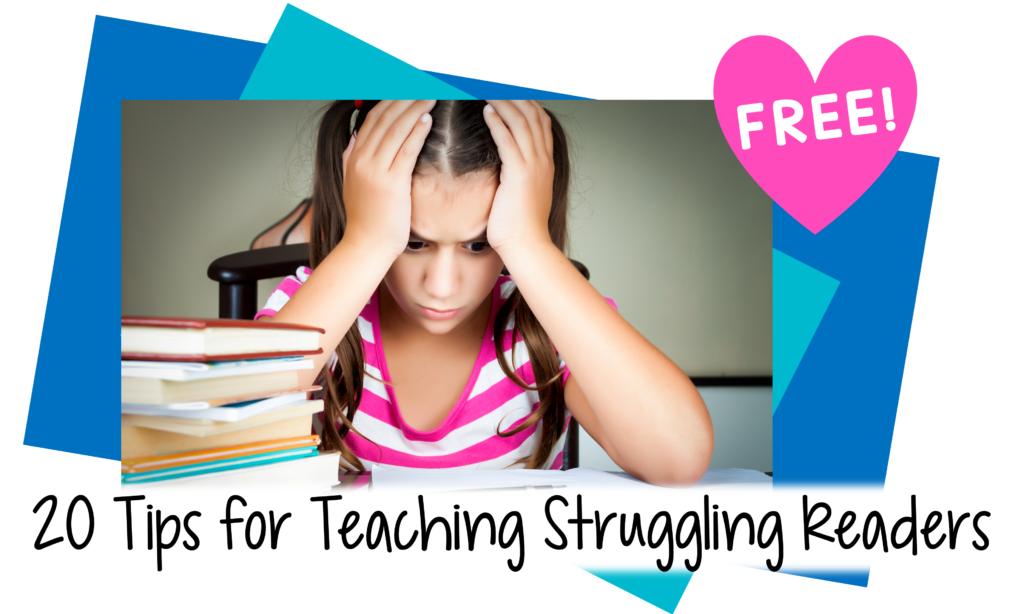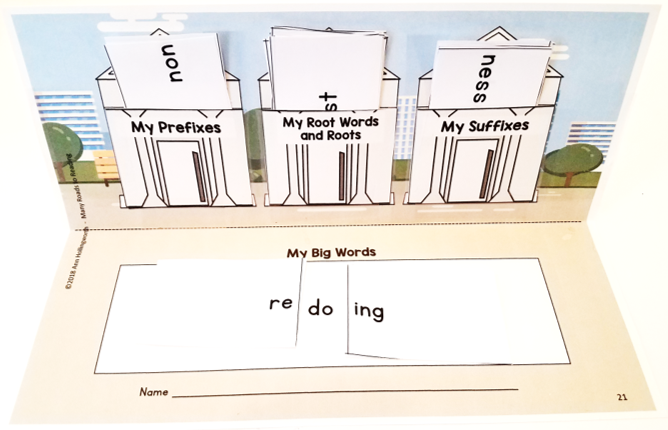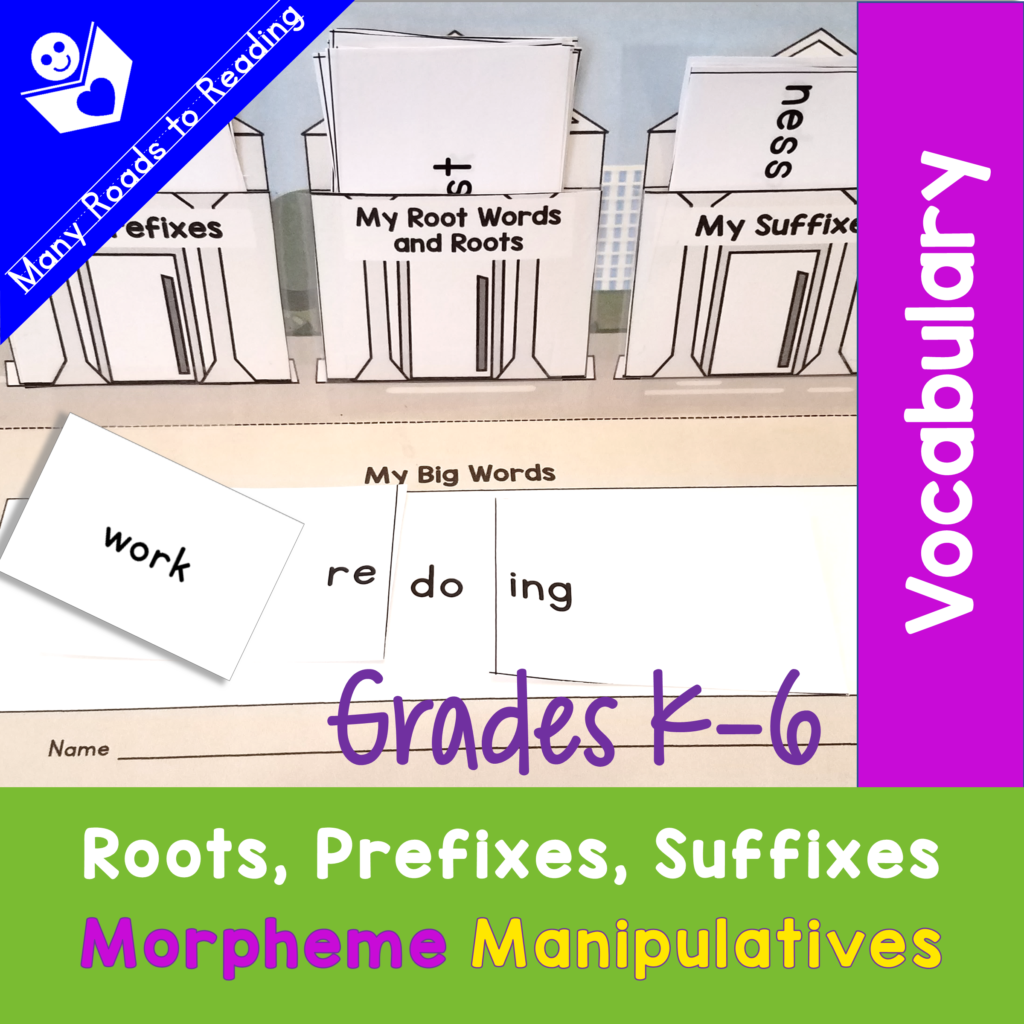I love teaching children about morphemes, because the payoff is so great!
Morphemes are the smallest meaningful units of a language (e.g., -s, re-, spect, fly). After spending decades focusing on phonemic and phonological awareness, educators are now realizing how important it is to teach morphological awareness as well.
Morphological awareness—the ability to use the smallest meaningful word parts to determine a word’s meaning—helps young readers by improving their:
- word recognition
- spelling
- fluency
- vocabulary
- comprehension
We can start teaching morphemes in kindergarten, or even pre-K, and our knowledge of word chunks can expand into adulthood.
Word Recognition and Spelling
The earliest morphemes a child learns about are inflections–suffixes that change a base word’s number (-s, -es) or time (-ed, -s, -es, -ing). Learning about word chunks is especially beneficial for children who are stuck in letter-by-letter decoding, because it shows them how to identify larger pieces of words. After learning to read word parts, kids can progress to spelling them, as well.
Wow! Now that I know -ing, I can read and spell going and looking and seeing and playing!
Fluency
More automatic word recognition leads to more fluent reading. Not having to decode i – n – g letter by letter is an early example. By reading high frequency words and affixes (prefixes and suffixes) in larger chunks, students can read more smoothly. And we all know that improved fluency causes a domino effect in reading—leading to better comprehension, word identification, and eventually back to fluency.
Vocabulary and Comprehension
Naturally, knowledge of morphemes helps expand a child’s vocabulary and comprehension. After all, morphemes are word parts that carry meaning. This meaning can be as simple and common as the suffix -s (meaning “more than one”) or as complex and unusual as the root psych (meaning “mind”).
As a student’s awareness of word parts expands, they can predict the meanings of complex words, words that contain more than one morpheme.
I can read: The boy replayed the video. I know the word play. The -ed means that it already happened, and re- means again, so the boy played the video again.
Psychology: I know that psych means mind, and ology means study of, so psychology must mean study of the mind.
Once a person can use morphemes to figure out the meanings of more words, their expanded vocabulary will help them better comprehend the texts they are reading.
Teaching Morphemic Awareness
While some children absorb an awareness of morphemes subconsciously, others need explicit teaching. All benefit from focused instruction to appreciate meaningful word parts and their relation to longer words. Morphological awareness can be particularly beneficial for students who:
- try to decode letter by letter
- read in a choppy manner
- have a weak vocabulary
I even find that working with morphemes even helps the passive learner. There is something very powerful about learning about meaningful word chunks.
Some possible teaching methods are:
- Demonstrate combinations of morphemes on a pocket chart.
- Provide morphemes and let students create whole words.
- Give a list of words containing the same morpheme, and have students infer its meaning.
- Ask children how to make longer words.
- Let students break apart longer words.
- Have kids think of words that contain a given morpheme.
- Play a game where players add, subtract, or substitute morphemes (like Geography).
- After teaching morphemes in isolation, have kids find them in books.
Although it benefits children to practice morphemes in isolation, I find that the best way to introduce morphemes is through examples. By showing examples of words with the same morpheme, students can infer the meaning of the common morphemes.
The first morphemes I teach kids are simple inflections (endings that change the time or number of a word: -s, -ed, -ing) added to familiar words.
sees, played, going
Once the reader understands and can use a few morphemes, you can show the same word with different morphemes.
plays, playing, played, player, replay
When kids are used to working with morphemes, you can let them practice joining and segmenting morphemes:
look + ing = looking
looking = look + ing
re + play + ed = replayed
replayed = re + play + ed
It’s also fun to lay out a bunch of cards with morphemes on them and let the children make up words. This makes them feel very powerful—like working with interlocking blocks. As time goes on, of course, you advance to more prefixes, suffixes, and word roots.
These are just a few suggestions for teaching morphemes. I bet you’ll find that learning about meaningful word parts is a boon for all your students, but possibly most helpful for struggling readers, kids who decode letter by letter, or youngsters with poor fluency. In fact, research shows that students with reading, spelling, and language difficulties can use morphemic awareness as a workaround for their disabilities.
This resource includes a scope and sequence for teaching morphemes, as well as physical morpheme cards and “banks” for hands-on learning. Kids love experimenting with making words out of meaningful word parts and adding to the morphemes in their banks.
And here is a free list of morphemes for your use:
Happy teaching morphemes or even using them for yourself!





Leave a Reply